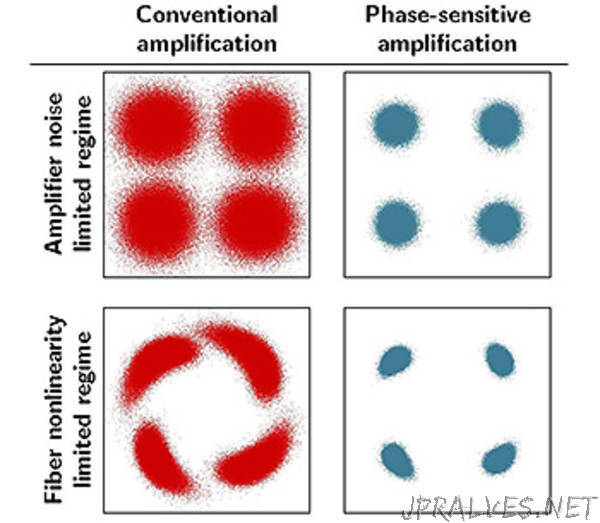
“Researchers from Chalmers University of Technology, Sweden, and Tallinn University of Technology, Estonia, have demonstrated a 4000 kilometre fibre-optical transmission link using ultra low-noise, phase-sensitive optical amplifiers. This is a reach improvement of almost six times what is possible when using conventional optical amplifiers. The results are published in Nature Communications.
Video streaming, cloud storage and other online services have created an insatiable demand for higher transmission capacity. To meet this demand, new technologies capable of significant improvements over existing solutions are being explored worldwide.
The reach and capacity in today’s fibre optical transmission links are both limited by the accumulation of noise, originating from optical amplifiers in the link, and by the signal distortion from nonlinear effects in the transmission fibre. In this ground-breaking demonstration, the researchers showed that the use of phase-sensitive amplifiers can significantly, and simultaneously, reduce the impact of both of these effects.
“While there remain several engineering challenges before these results can be implemented commercially, the results show, for the first time, in a very clear way, the great benefits of using these amplifiers in optical communication”, says Professor Peter Andrekson, who leads the research on optical communication at Chalmers University of Technology.
The amplifiers can provide a very significant reach improvement over conventional approaches, and could potentially improve the performance of future fibre-optical communication systems.
“Such amplifiers may also find applications in quantum informatics and related fields, where generation and processing of quantum states are of interest, as well as in spectroscopy or any other application which could benefit from ultra-low-noise amplification”, says Professor Peter Andrekson (tpo the left).
The research has been funded by the European Research Council (ERC), the Swedish Research Council, and the Wallenberg Foundation.”
